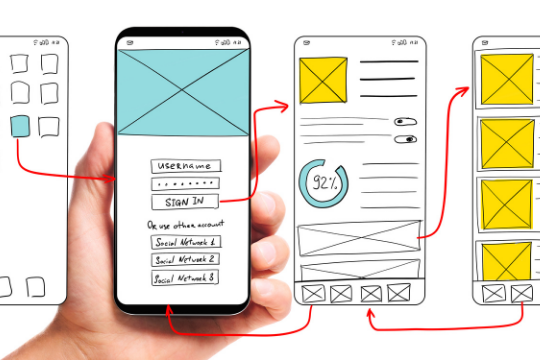 Video marketing is a popular choice for businesses of all sizes looking to reach out and connect with customers. Video marketing uses several different strategies, like how-to videos, interviews and more, by using a combination of images and video which gives your customers the chance to see how your product works in real life.
Video marketing is a popular choice for businesses of all sizes looking to reach out and connect with customers. Video marketing uses several different strategies, like how-to videos, interviews and more, by using a combination of images and video which gives your customers the chance to see how your product works in real life.
To use video marketing effectively you have to know how to create an effective how-to style video that will convince potential clients that they need whatever it is you are selling.
Benefits of Creating Videos for Your Business
Benefit #1 – Videos Create Visual Impact
Video marketing can be very effective if they show how something works in real life, or showcase a previous client’s experience with the product. Videos show how the product performs and how it looks while doing so, creating visual impact within minutes of your video being viewed. You can also use interviews to promote products or services and shopping channels do this often by asking questions about what customers like best about their favorite items and how they will use them.
Benefit #2 – Videos Help Reach Out To Current Customers And New Prospects
Video marketing makes it easier than ever to reach out to current customers letting them know how they can get the most out of their purchases. Customers may love your products but still need help figuring how to use them so creating how-to videos is a great way to provide this information, especially with this kind of content being available online 24/7. As for prospects, videos can show how easy the product is to use so customers are more likely to buy.
Benefit #3 – Videos Are Easy To Create Compared To Other Types Of Marketing Strategies
Creating videos is something you may be able to do yourself without having to hire freelancers or spend lots of money on hiring professionals. You can create videos for free if you use your smart phone or digital camera to take pictures of how something works so all you need is software to edit the photos together with voiceover work.
Benefit #4 – Videos Can Be Posted On Social Media Platforms Making It Easy To Share Them With Friends And Family
Videos are easy to share on social media platforms like Facebook and Twitter which makes it even easier to market your products in an effective way because friends often share useful information at a higher rate than others sharing random things they see online. Videos are shared more often when they are easy-to-understand content because those are typically easier to digest.
How To Create A Successful Video for Your Business?
1. Come Up With an Idea
Decide what exactly it is you want people to get from your video. Then figure out how best you can showcase it without having them ask questions in their head during the duration of the video.
2. Gather Your Equipment
Filming videos is a great way to share information about how and why people chose to use certain products. Consider the kind of video you want to create, using text on an image or video, and make sure that you have the proper recording equipment for editing, depending on what type of video you are creating.
3. Gather Your Resources
Have all the items needed to film the video. If it is an interview about how your products can help customers save money or time, make sure that you have everything in place prior to filming including a list of questions as well as an outline for how you want your interviewee to respond.
4. Film the Video
Once you have everything planned out, you can get started on putting the video together, making sure that you don’t miss anything in the process. Filming the video is often the most stressful part of the process, so once you finish with this step, you just need to edit and publish!
5. Edit for Quality
Before uploading your new video, take time to edit properly so that it includes high quality images and sounds without any glitches or errors. Make sure that you are happy with how the video looks before you upload it live and potential customers. Make sure to double-check!
6. Upload for Success
Once your video is ready, don’t just stuff it in a corner of your website or blog. Make sure you promote the video or link to it through your social networking accounts so that current customers and prospects will be able to find it easily. You can also create a separate page on your site that really highlights the video and makes it the center of attention. On this page, you should include what kind of product you’re selling, where they can purchase it and any special offers you may have about using that type of product they can get elsewhere online too. Also, consider putting resources on the page that potential customers may need.
How Can You Use Video Marketing?
There are many different ways that you can use video marketing in your business. The most popular way is how-to videos, but there are also other options out there for you. Within each of these categories there are various styles of videos that allow you to choose what works best for your business.
Personal How-To Videos
People want to feel connected to others like them and using personal how-to videos helps this happen because they feel like they know the person on screen through their actions and tone of voice. If you use a human figure [rather than just an illustration] in your how-to video, people who watch your video will connect with that figure on screen and hopefully feel compelled to buy whatever it is that you’re selling if they can relate or think how their life will be improved by using it too.
You can use how-to videos to show how the product works and how easy it is for the consumer to use, even if you’re not directly involved in that how-to video. There are many other ways that you could get creative with how-tos but this is mostly a matter of personal preference. And keep in mind that a personal how-to style video is most effective when people feel like they know you as well as the product.
Promotional
Promotional videos are used to sell a specific product or service. They’re usually created by companies themselves so that they can help advertise a new launch or special offer. In these types of videos, the presenter will usually be talking about how wonderful their company is or how great their product or service is. It doesn’t really matter how you make your promotional video, so long as it’s effective in getting people to want what you have to sell.
Interviews
Interviews are when one person asks another person a set of questions. You can interview an expert or a “person of interest” and help the audience learn more about that person and how they relate to your company. For example, you can interview a current customer who has been using your product for over ten years.
If this is the type of video that will work best for your company then you can incorporate it by asking the other person how the product or service helped them get to where they are today, whether it is as simple as using a software to become more productive or something more life-changing such as getting braces to have a more confident smile in the future, improving one’s overall self-perception.
Live Streaming
Live streaming is a great way to connect with your audience. You can allow your audience to get involved through platforms such as Instagram and Facebook live, where consumers get to ask questions and the company answers them in real-time. You can also get real-time feedback and suggestions from your audience which can be a great factor in company growth, if you choose to apply some of the suggestions. The best thing about livestreaming is that you do not have to pay a penny out of your pocket!
Final Thoughts
Video marketing is an excellent way to promote any service or product that you have. Although there are many different types of videos, the main goal of the videos is to help customers solve problems and improve how they do everyday tasks. By using videos for your business, consumers will be able to relate more easily to how the product or service can help improve how they do everyday tasks.
In order to be a successful business owner, you need to learn how to properly market your company’s products and services. The best way that you can get started is by using videos for your company since they are one of the best marketing tools out there.
Sunvera Software develops next-level software applications from start-to-finish. We are a premier software and mobile app development agency specializing in healthcare mobile app development, custom mobile app development company, telehealth software, sales dashboards, custom mobile app development services, retail software development, supply-chain software, ecommerce, shopify, web design, iBeacon apps, security solutions and unified access software.
We are proud partners with Amazon AWS, Microsoft Azure and Google Cloud.
Schedule a free 30-minute call with us to discuss your business, or you can give us a call at (949) 284-6300.
 The business world is increasingly going online, and business applications have become a necessity for company growth. Business apps can range from business-centric websites to automated employee and customer support systems. Most business apps are not developed internally, so entrepreneurs often seek a business app developer who has experience in this area.
The business world is increasingly going online, and business applications have become a necessity for company growth. Business apps can range from business-centric websites to automated employee and customer support systems. Most business apps are not developed internally, so entrepreneurs often seek a business app developer who has experience in this area. Decentralized applications, or DApps, are decentralized services that exist solely on the blockchain. Currently decentralized services can be categorized into three main types – decentralized exchanges (DEXs), decentralized storage solutions and cryptocurrencies. Blockchain is decentralized because all of the data is stored on multiple nodes, so even if one node goes down the others will still be able to access its data. DApps are decentralized applications that run on a blockchain platform just like Bitcoin and Ethereum do.
Decentralized applications, or DApps, are decentralized services that exist solely on the blockchain. Currently decentralized services can be categorized into three main types – decentralized exchanges (DEXs), decentralized storage solutions and cryptocurrencies. Blockchain is decentralized because all of the data is stored on multiple nodes, so even if one node goes down the others will still be able to access its data. DApps are decentralized applications that run on a blockchain platform just like Bitcoin and Ethereum do. Instacart is an on-demand grocery delivery service based in San Francisco, California.
Instacart is an on-demand grocery delivery service based in San Francisco, California.  Mobile user retention in mobile games is a huge problem for game developers. Since the user acquisition cost for mobile games has increased significantly, user retention has become a greater focus due to the higher user acquisition costs.
Mobile user retention in mobile games is a huge problem for game developers. Since the user acquisition cost for mobile games has increased significantly, user retention has become a greater focus due to the higher user acquisition costs. Sunvera Software has been named one of the top
Sunvera Software has been named one of the top  With wearable technology gaining popularity, wearable medical devices are also becoming a statement in healthcare.
With wearable technology gaining popularity, wearable medical devices are also becoming a statement in healthcare. Telemedical advances in rural areas have proven to be extremely beneficial in terms of cost, efficacy, and quality. With today’s advanced technology that is so much more affordable and accessible than it was 20 years ago, rural areas can benefit from telemedicine just as well as urban areas.
Telemedical advances in rural areas have proven to be extremely beneficial in terms of cost, efficacy, and quality. With today’s advanced technology that is so much more affordable and accessible than it was 20 years ago, rural areas can benefit from telemedicine just as well as urban areas. There is an undeniable and growing mental health epidemic in modern society. Not only are mental health disorders affecting a generation of youth, but mental illness has reached an all-time high among adults as well. According to the National Institute of Mental Health (NIMH), “Research suggests that mental health problems begin early in life”, with one out of four adults suffering from mental health issues every year. Unfortunately, mental illness is not always readily apparent.
There is an undeniable and growing mental health epidemic in modern society. Not only are mental health disorders affecting a generation of youth, but mental illness has reached an all-time high among adults as well. According to the National Institute of Mental Health (NIMH), “Research suggests that mental health problems begin early in life”, with one out of four adults suffering from mental health issues every year. Unfortunately, mental illness is not always readily apparent. Business users need new and improved services, which often drives the need to reduce IT infrastructure costs.
Business users need new and improved services, which often drives the need to reduce IT infrastructure costs.
